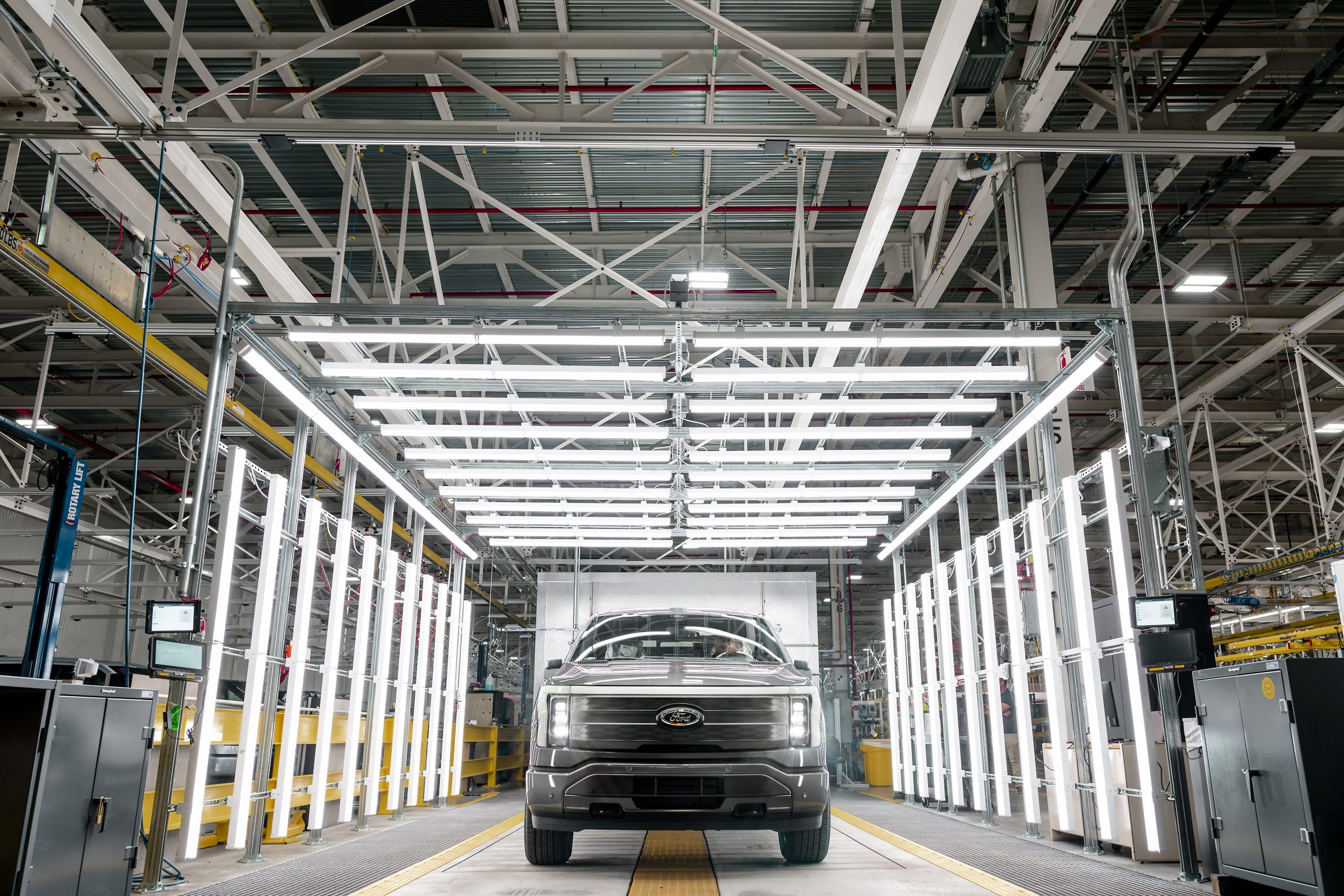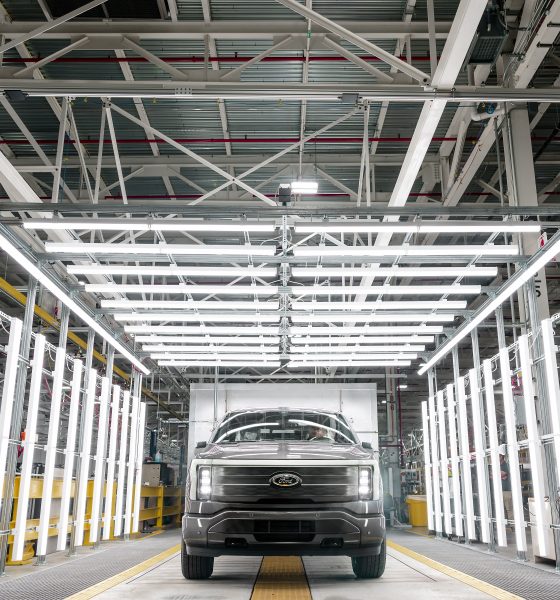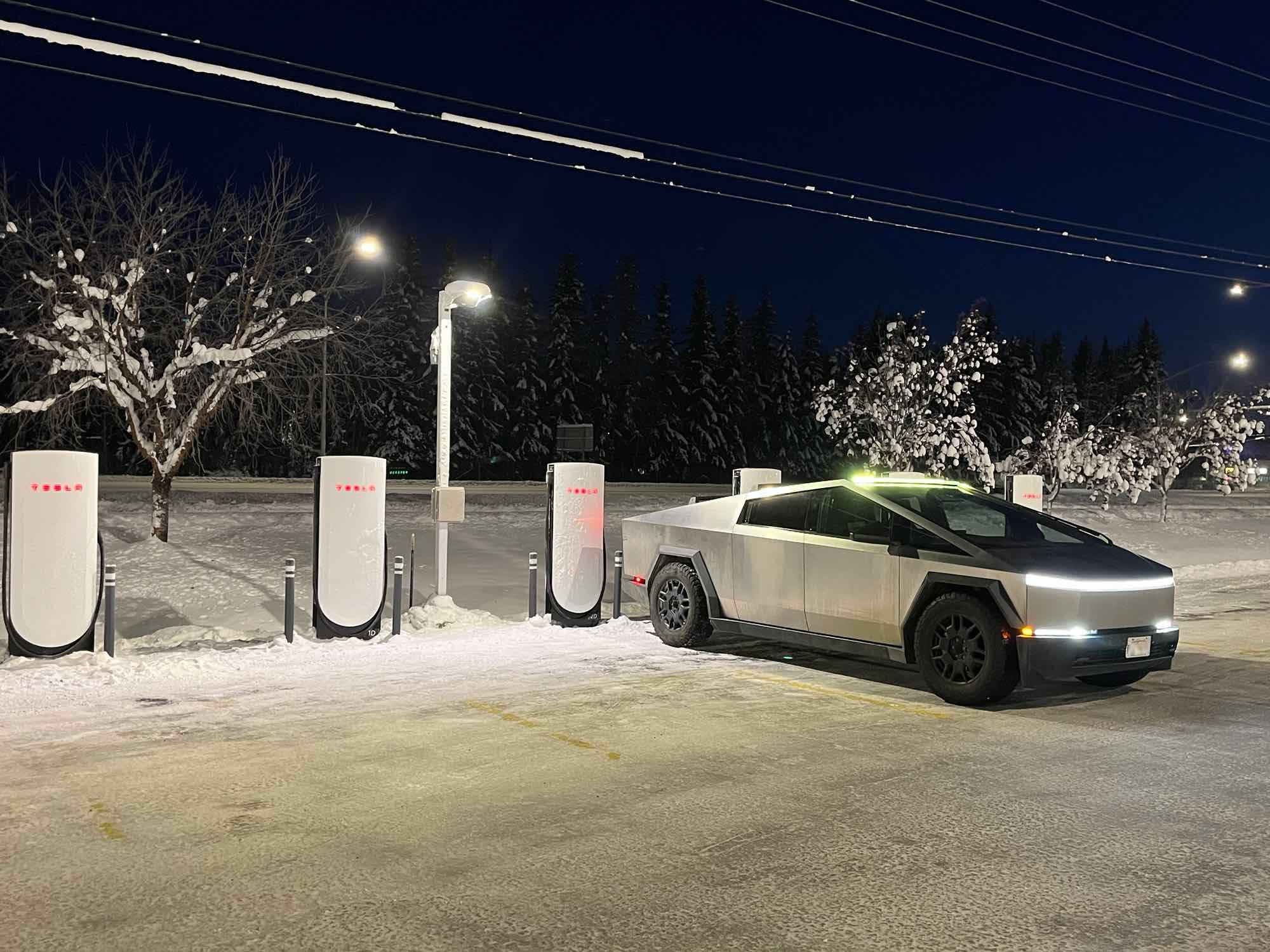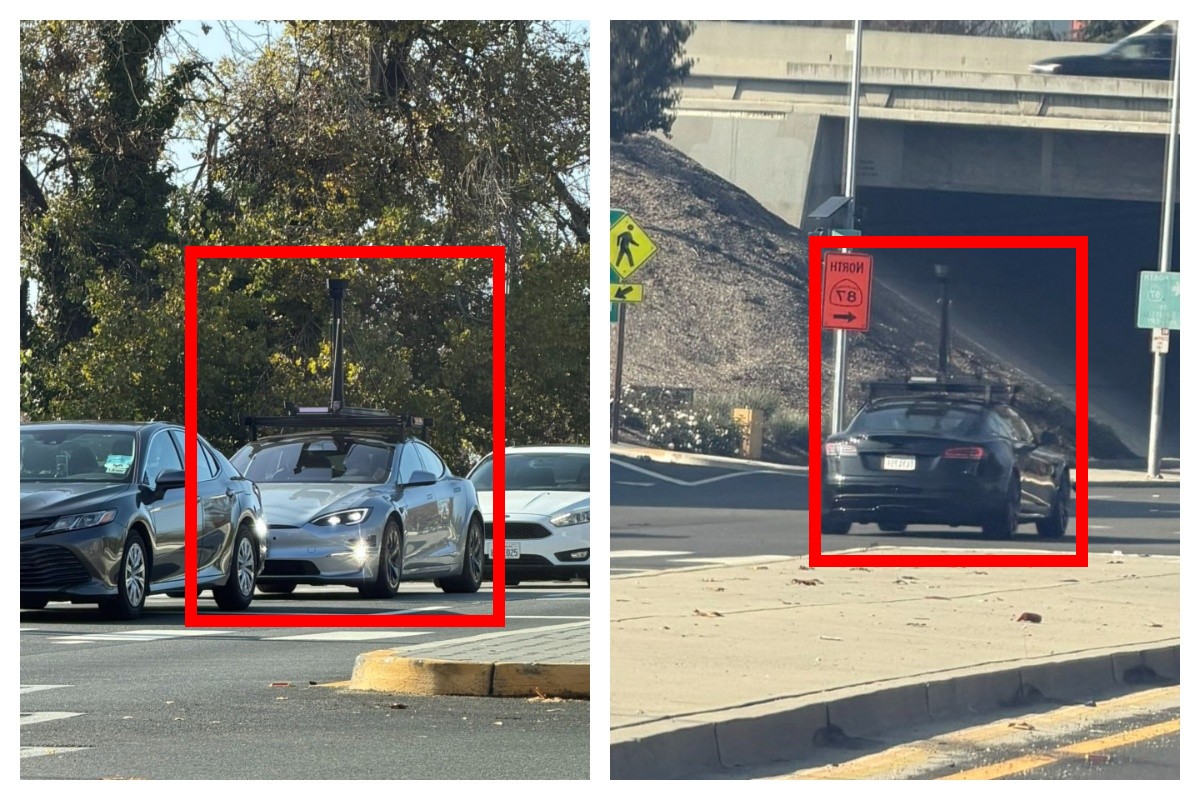

News
Ford’s top brass sit down with Sandy Munro to discuss the F-150 Lightning
Ford CEO Jim Farley and other company executives were interviewed by Sandy Munro earlier this week, highlighting the work done on the F-150 Lightning, its defining features, as well as Ford’s future more generally.
Sandy Munro of Munro Associates runs a YouTube channel where he and his team dive into different models of vehicles and analyze their dependability, durability, and overall engineering design work. However, Sandy and fellow Munro associate Cory Steuben got to sit down with top leaders from Ford, which included Farley, Linda Zhang, who was the Chief Engineer of the all-electric pickup, and Doug Field, the automaker’s Chief Officer of EVs. Mainly focusing on the F-150 Lightning but also talking about the brand’s future and competitors, the interview culminated as Sandy asked the executive team about possible vertical integration within their manufacturing process, possible partnerships with Tesla, and a possible switch to the Tesla connector as the US default.
The video starts with Sandy getting the keys to his new F-150 Lightning, kindly delivered in person by Jim Farley and the team. However, Sandy quickly moves to ask about the truck and its design.
While Sandy was quick to praise the EV drivetrain and the durability of design, foremost thought the interview; the executive team focused on accessory features instead. Doug Field specifically sees the onboard generator, the large frunk, and the bi-directional power (the feature that allows the truck to power the home during a blackout) as the top reasons consumers have flocked to the new truck. Farley continues by noting that, while he didn’t expect the vehicle’s features to be such a crowd pleaser, he believes that they are the reason consumers aren’t asking “why an EV,” but “why not!”
The rest of the interview generally focuses on the market and the Ford brand. The biggest question is the thought of exponential growth in the EV market. Sandy notes explicitly that the US market had recently reached a 5% market share of EVs, what he calls a “tipping point” in the market. Jim responds positively, noting that he is excited about the chance to expand so quickly, expanding older plants such as “The Rouge” and constructing new plants like their new facility in Tennessee to meet demand. Further, he notes he isn’t worried about the brand’s ability to meet demand.
Another big question on the mind of Sandy (and many others who are interested in EVs) is the question of a partnership with Tesla, as well as the executives’ thoughts on the recent proposal to make the Tesla connector the new US standard. “We consider everything,” Doug responds tritely. The team responds to a Tesla partnership, saying that Ford would need a powerful motivating idea to consider abandoning their independence and partnering with another maker, Tesla or otherwise. However, none of the team concretely answered Sandy’s question about standardizing the Tesla Connector.
The group next addresses the possibility of increased verticle integration within their manufacturing. Software, batteries, and powertrain parts were essential parts where they stated the brand would likely continue to pursue verticle integration, going as far as to call other battery makers such as CATL “competitors.” However, Farley notes that he would not compromise the user experience in efforts of verticle integration.
Sandy concludes by lamenting the lack of the $20-$25,000 EV. He mentions that the in-demand Maverick is an excellent example of a vehicle that shows affordable vehicles can still do well and prove profitable for brands like Ford. Doug responds conservatively that, while they see the segment as “very important for global competitiveness,” difficulties remain in acquiring affordable powertrain parts and batteries. And while LFP batteries may offer an avenue into that market, Ford is still in the process of “considering other options.”
Sandy’s interview shows that Ford remains quite dedicated to pursuing EV tech and why they remain ahead of previous rivals such as GM and the Chrysler family of brands. Farley is thinking ahead of many of these other legacy brands, and despite the hurdles that come with that status (cough cough dealerships cough cough), they are positioning themselves well to succeed. Ford’s sales and stock price seem to reflect this.
What do you think of the article? Do you have any comments, questions, or concerns? Shoot me an email at william@teslarati.com. You can also reach me on Twitter @WilliamWritin. If you have news tips, email us at tips@teslarati.com!

Cybertruck
Tesla updates Cybertruck owners about key Powershare feature

Tesla is updating Cybertruck owners on its timeline of a massive feature that has yet to ship: Powershare with Powerwall.
Powershare is a bidirectional charging feature exclusive to Cybertruck, which allows the vehicle’s battery to act as a portable power source for homes, appliances, tools, other EVs, and more. It was announced in late 2023 as part of Tesla’s push into vehicle-to-everything energy sharing, and acting as a giant portable charger is the main advantage, as it can provide backup power during outages.
Cybertruck’s Powershare system supports both vehicle-to-load (V2L) and vehicle-to-home (V2H), making it flexible and well-rounded for a variety of applications.
However, even though the feature was promised with Cybertruck, it has yet to be shipped to vehicles. Tesla communicated with owners through email recently regarding Powershare with Powerwall, which essentially has the pickup act as an extended battery.
Powerwall discharge would be prioritized before tapping into the truck’s larger pack.
However, Tesla is still working on getting the feature out to owners, an email said:
“We’re writing to let you know that the Powershare with Powerwall feature is still in development and is now scheduled for release in mid-2026.
This new release date gives us additional time to design and test this feature, ensuring its ability to communicate and optimize energy sharing between your vehicle and many configurations and generations of Powerwall. We are also using this time to develop additional Powershare features that will help us continue to accelerate the world’s transition to sustainable energy.”
Owners have expressed some real disappointment in Tesla’s continuous delays in releasing the feature, as it was expected to be released by late 2024, but now has been pushed back several times to mid-2026, according to the email.
Foundation Series Cybertruck buyers paid extra, expecting the feature to be rolled out with their vehicle upon pickup.
Cybertruck’s Lead Engineer, Wes Morrill, even commented on the holdup:
As a Cybertruck owner who also has Powerwall, I empathize with the disappointed comments.
To their credit, the team has delivered powershare functionality to Cybertruck customers who otherwise have no backup with development of the powershare gateway. As well as those with solar…
— Wes (@wmorrill3) December 12, 2025
He said that “it turned out to be much harder than anticipated to make powershare work seamlessly with existing Powerwalls through existing wall connectors. Two grid-forming devices need to negotiate who will form and who will follow, depending on the state of charge of each, and they need to do this without a network and through multiple generations of hardware, and test and validate this process through rigorous certifications to ensure grid safety.”
It’s nice to see the transparency, but it is justified for some Cybertruck owners to feel like they’ve been bait-and-switched.
News
Tesla’s northernmost Supercharger in North America opens

Tesla has opened its northernmost Supercharger in Fairbanks, Alaska, with eight V4 stalls located in one of the most frigid cities in the U.S.
Located just 196 miles from the Arctic Circle, Fairbanks’s average temperature for the week was around -12 degrees Fahrenheit. However, there are plenty of Tesla owners in Alaska who have been waiting for more charging options out in public.
There are only 36 total Supercharger stalls in Alaska, despite being the largest state in the U.S.
Eight Superchargers were added to Fairbanks, which will eventually be a 48-stall station. Tesla announced its activation today:
North America’s northernmost Supercharger Fairbanks, AK (8 stalls) opened to public. https://t.co/M4l04DZ6B5 pic.twitter.com/zyL6bDuA93
— Tesla Charging (@TeslaCharging) December 12, 2025
The base price per kWh is $0.43 at the Fairbanks Supercharger. Thanks to its V4 capabilities, it can charge at speeds up to 325 kW.
Despite being the northernmost Supercharger in North America, it is not even in the Top 5 northernmost Superchargers globally, because Alaska is south of Norway. The northernmost Supercharger is in Honningsvåg, Norway. All of the Top 5 are in the Scandanavian country.
Tesla’s Supercharger expansion in 2025 has been impressive, and although it experienced some early-quarter slowdowns due to V3-to-V4 hardware transitions, it has been the company’s strongest year for deployments.
🚨🚨 Tesla Supercharging had a HUGE year, and they deserve to be recognized.
🍔 Opened Tesla Diner, a drive-in movie theater with awesome, Chef-curated cuisine
🔌 Gave access to Superchargers to several EV makers, including Hyundai, Genesis, Mercedes-Benz, Kia, Lucid, Toyota,… pic.twitter.com/yYT2QEbqoW
— TESLARATI (@Teslarati) December 10, 2025
Through the three quarters of 2025, the company has added 7,753 stations and 73,817 stalls across the world, a 16 percent increase in stations and an 18 percent increase in stalls compared to last year.
Tesla is on track to add over 12,000 stalls for the full year, achieving an average of one new stall every hour, an impressive statistic.
Recently, the company wrapped up construction at its Supercharger Oasis in Lost Hills, California, a 168-stall Supercharger that Tesla Solar Panels completely power. It is the largest Supercharger in the world.
News
Tesla shocks with latest Robotaxi testing move
Why Tesla has chosen to use a couple of Model S units must have a reason; the company is calculated in its engineering and data collection efforts, so this is definitely more than “we just felt like giving our drivers a change of scenery.”

Tesla Model S vehicles were spotted performing validation testing with LiDAR rigs in California today, a pretty big switch-up compared to what we are used to seeing on the roads.
Tesla utilizes the Model Y crossover for its Robotaxi fleet. It is adequately sized, the most popular vehicle in its lineup, and is suitable for a wide variety of applications. It provides enough luxury for a single rider, but enough room for several passengers, if needed.
However, the testing has seemingly expanded to one of Tesla’s premium flagship offerings, as the Model S was spotted with the validation equipment that is seen entirely with Model Y vehicles. We have written several articles on Robotaxi testing mules being spotted across the United States, but this is a first:
🚨 Tesla is using Model S vehicles fitted with LiDAR rigs to validate FSD and Robotaxi, differing from the Model Ys that it uses typically
Those Model Y vehicles have been on the East Coast for some time. These Model S cars were spotted in California https://t.co/CN9Bw5Wma8 pic.twitter.com/UE55hx5mdd
— TESLARATI (@Teslarati) December 11, 2025
Why Tesla has chosen to use a couple of Model S units must have a reason; the company is calculated in its engineering and data collection efforts, so this is definitely more than “we just felt like giving our drivers a change of scenery.”
It seems to hint that Tesla could add a premium, more luxury offering to its Robotaxi platform eventually. Think about it: Uber has Uber Black, Lyft has Lyft Black. These vehicles and services are associated with a more premium cost as they combine luxury models with more catered transportation options.
Tesla could be testing the waters here, and it could be thinking of adding the Model S to its fleet of ride-hailing vehicles.
Reluctant to remove the Model S from its production plans completely despite its low volume contributions to the overall mission of transitioning the world to sustainable energy, the flagship sedan has always meant something. CEO Elon Musk referred to it, along with its sibling Model X, as continuing on production lines due to “sentimental reasons.”
However, its purpose might have been expanded to justify keeping it around, and why not? It is a cozy, premium offering, and it would be great for those who want a little more luxury and are willing to pay a few extra dollars.
Of course, none of this is even close to confirmed. However, it is reasonable to speculate that the Model S could be a potential addition to the Robotaxi fleet. It’s capable of all the same things the Model Y is, but with more luxuriousness, and it could be the perfect addition to the futuristic fleet.








